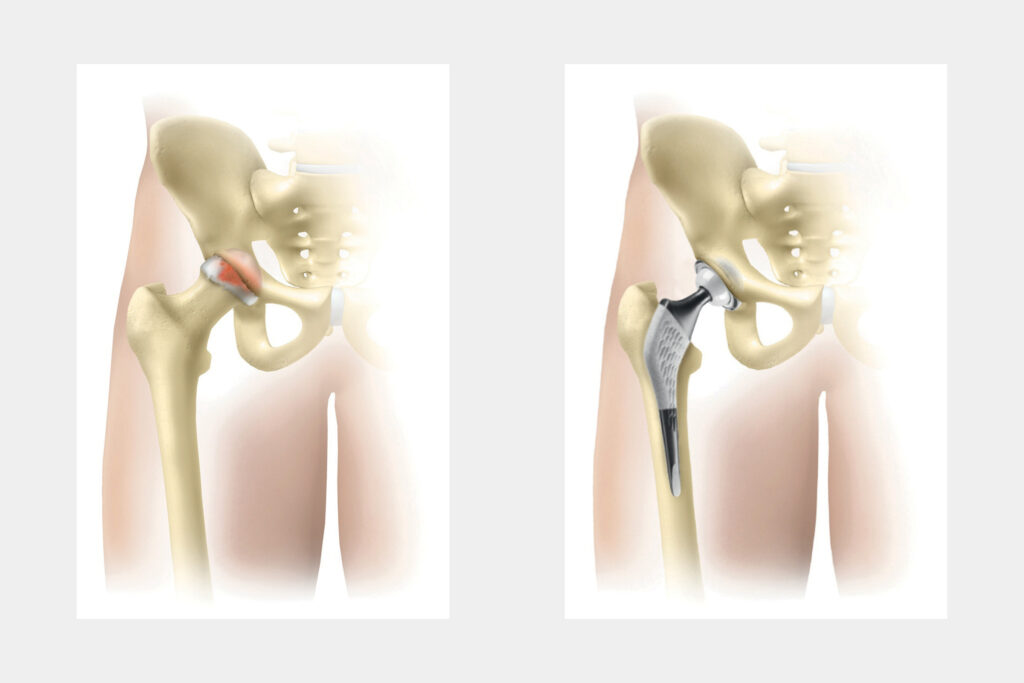Welcome - Video Template – New Identity Grey – Green
Video model
Hip osteoarthritis, also known as coxarthrosis, is the progressive wear and tear of the cartilage in the coxofemoral joint. This common condition affects approximately 10% of the population over the age of 60 and is one of the main reasons for orthopedic consultations. The hip, an essential weight-bearing joint, supports the body's weight and allows for walking, running, and many daily movements. When the cartilage thins and then disappears, bone rubs directly on bone, causing pain and functional limitations. This situation requires a precise assessment to determine the best treatment for each patient.
Causes
Hip osteoarthritis can have several causes. Natural age-related wear and tear remains the most common cause, but certain specific bone morphologies such as hip dysplasia or femoroacetabular impingement predispose to early osteoarthritis. The after-effects of joint fractures, bone necrosis of the femoral head, certain inflammatory diseases such as rheumatoid arthritis, or even prolonged use of corticosteroids can also accelerate cartilage degradation. Being overweight, certain intensive sports activities, and repeated microtraumas also contribute to the development of this pathology.
Symptoms
Pain is the main symptom of hip osteoarthritis. It typically occurs in the groin crease and can radiate to the thigh, knee, or buttock. Initially present during exertion such as prolonged walking or climbing stairs, it gradually becomes more frequent and can even occur at rest. Joint stiffness then appears, particularly in the morning upon waking or after prolonged sitting. Patients often describe a sensation of unlocking that is necessary before being able to walk normally. As the condition progresses, a limp sets in and the walking distance gradually reduces.
Treatments

Surgery
Want to learn more about hip osteoarthritis?
On our Medicol website you will find additional detailed information.

PTH today: what challenges?

Hip arthroscopy



